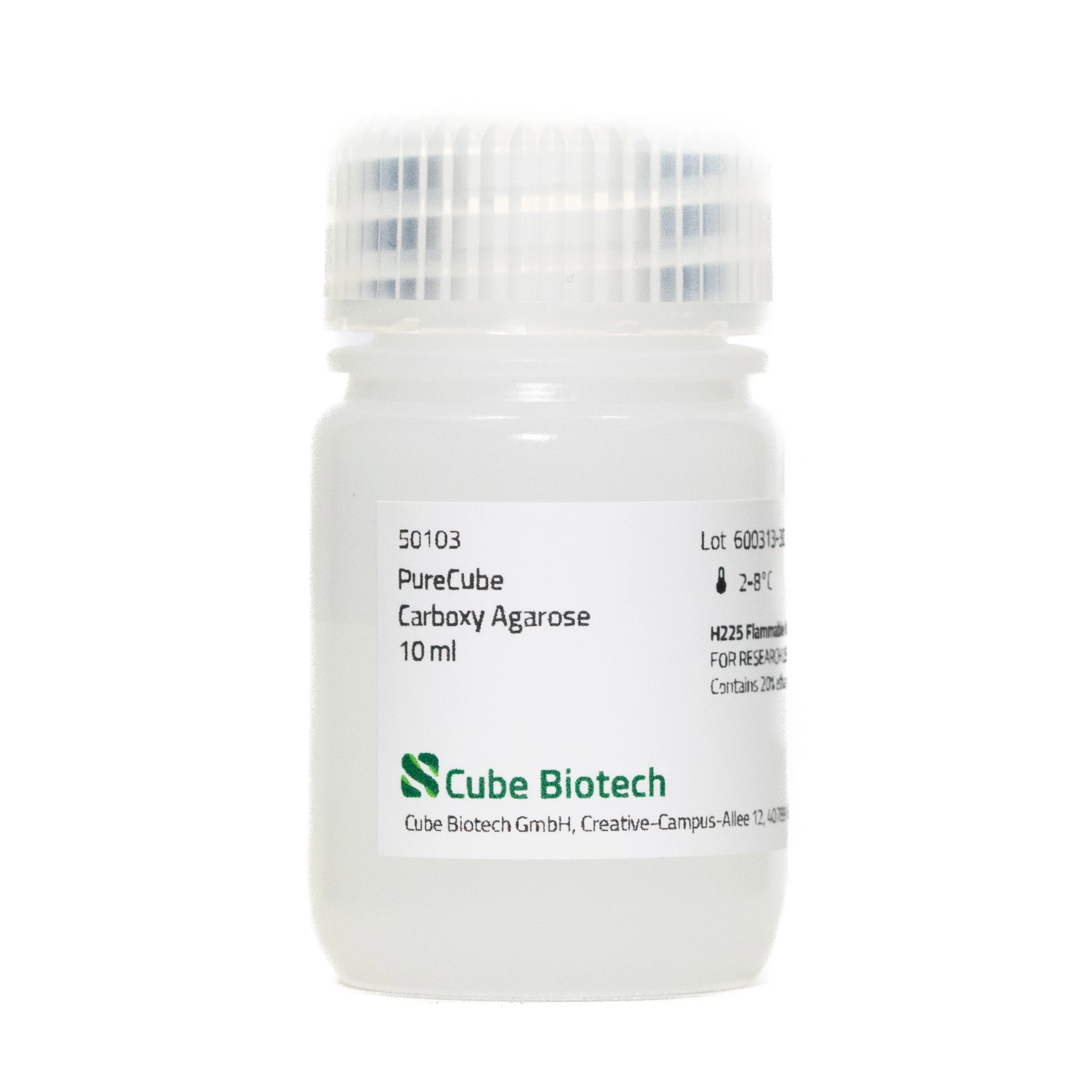PureCube Carboxy Agarose
Order number: 50103
Description
PureCube Amine Carboxy Agarose resin is your best option to couple biomolecules that carry free-standing Amine (NH2) groups. The resulting peptide bond between the Carboxy Agarose beads and your biomolecule of interest is stable so that the bead can be used for other applications afterward. Our PureCube Carboxy Activated Agarose is also available as magnetic beads in case you prefer this purification method, or as XL agarose resin if you need higher flow rates for your downstream application.
| Feature | |
|---|---|
| Usage | Coupling biomolecules to active Carboxy Groups |
| Specificity | Exposed Amine (NH2) groups on biomolecule |
| Carboxy group density | > 15 µmol/ml (determined by acidimetric titration) |
| Bead Ligand | Chemically active Carboxy groups |
| Bead size | 50-150 µm, spherical |
| Filling quantity | 50% suspension, (e.g. 10 ml will be 5 ml settled resin + 5 ml storage buffer) |
| Storage Buffer | 20 mM sodium acetate with 20% ethanol, pH 6.6 |
| Matrix | 6% agarose, highly cross-linked |
| Size exclusion limit | 4 x 106 Da |
| Maximum pressure | ≥300 kPa (at 15 cm bed height) |
| Maximum flow rate | ≥1000 cm/h (at 15 cm bed height) |
| Short Term storage | In equilibration buffer (see protocol); 2-8°C |
| Long Term storage | 100 mM sodium hydrogen carbonate, 0.02% sodium azide, pH 7.5 or 20 mM sodium acetate with 20% ethanol, pH 6.6; 2-8°C |
| Shelf life | If properly stored - 2 years upon delivery, unopened |
| Shipping | Room Temperature |
Citations
| Specific use | Year | Author |
|---|---|---|
| Collecting samples for Phosphopeptide Enrichment | 2024 | Fan F., Bable F.E., Swaney E.E.K., Hearps S.J.C.,Takagi M., Emery-Corbin S.J., Dagley L.F., Yousef J., Parkin G.M., Rausa V.C., Anderson N., Fabiano F., Dunne K., Seal M., Davis G.A., Attard C., Anderson V., Ignjatociv V. |
FAQ
Can I get the datasheet for the Carboxy Activated Agarose?
What can I do with these beads?
The beads carry reactive Carboxy groups on their surface. These can be used to bind all sorts of biomolecules if they carry free amine (NH2) groups. The subsequent use of the beads depends on what biomolecule was coupled.
How does the coupling work?
How long can I store the Carboxy Activated Beads?
Unlike some other activated beads, carboxy activated beads have a long shelf life. The half-life of the carboxy beads is around 3 years of properly stored.



